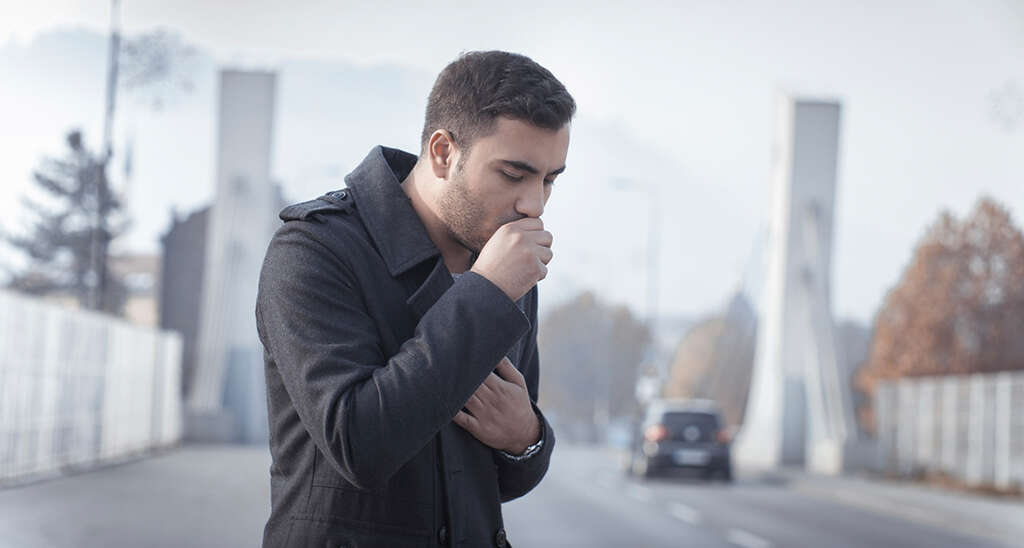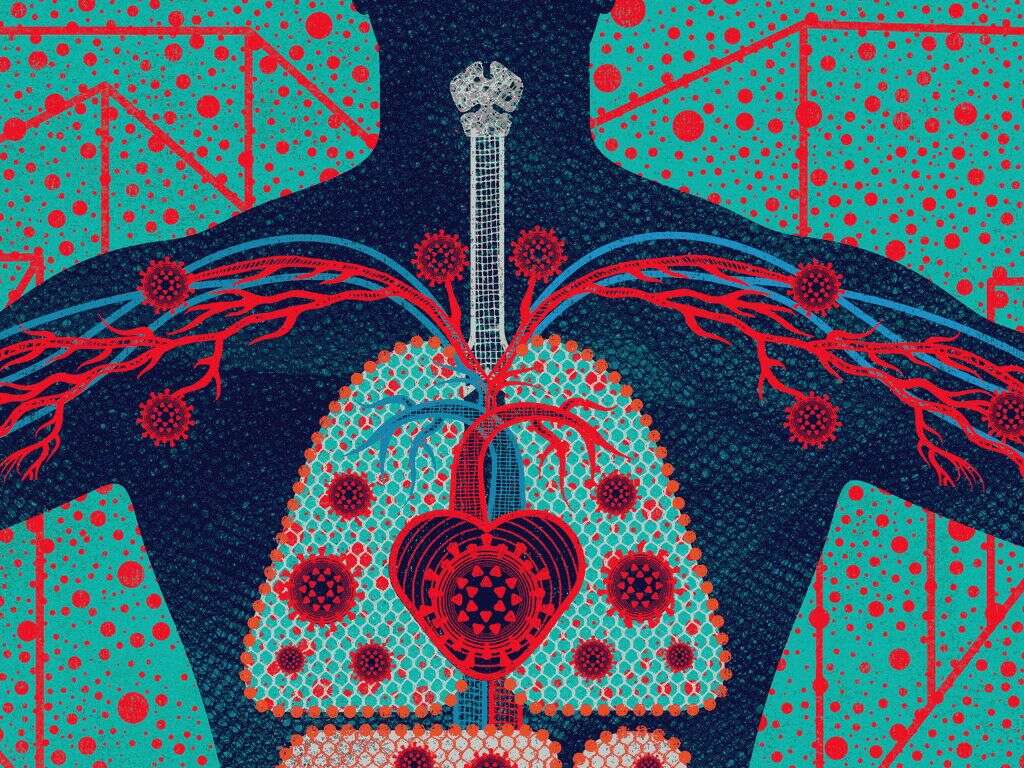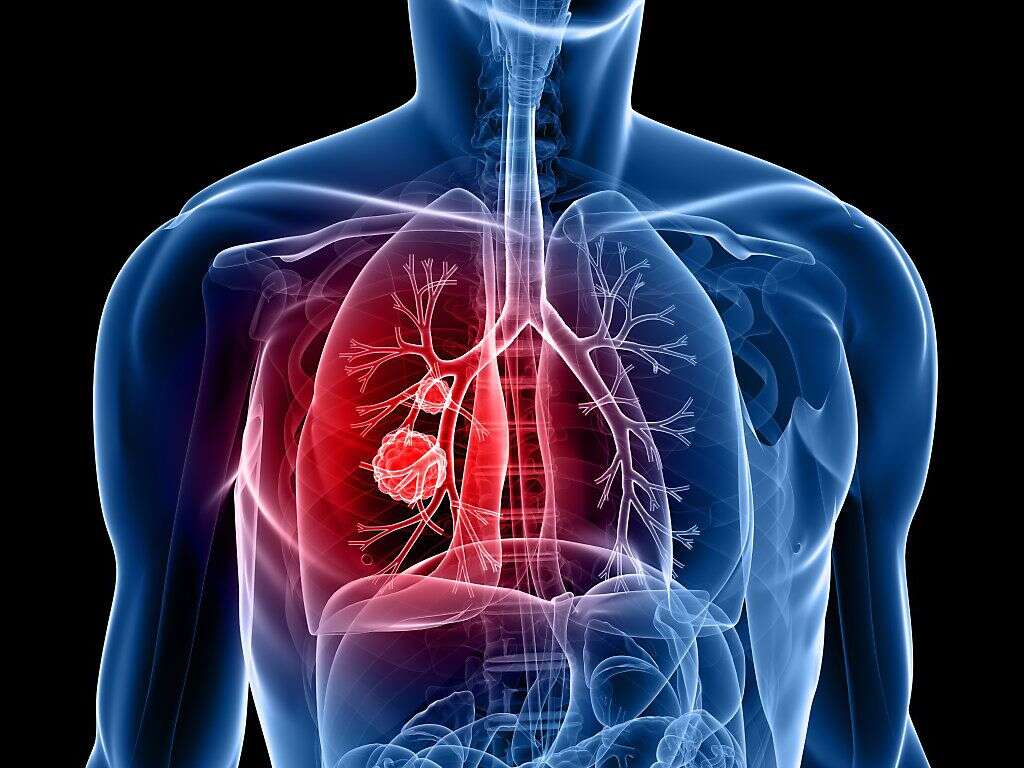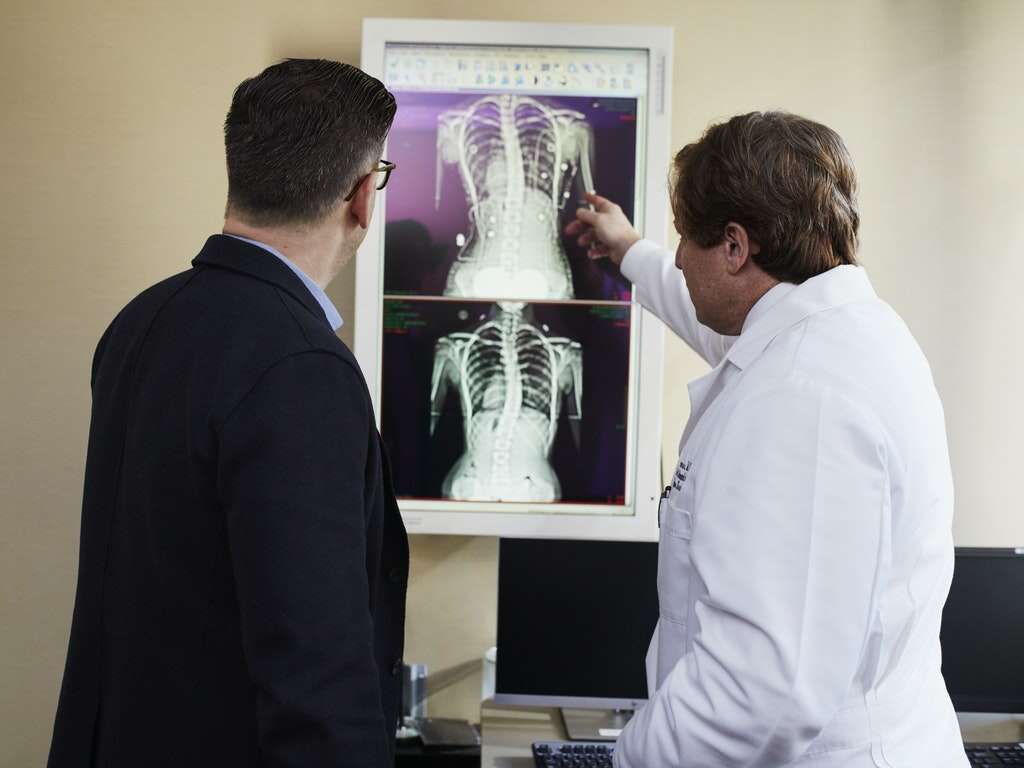10 Symptoms of Pneumothorax
The lungs can be considered to be two inflatable bags side by side. Our muscles will cause these bags to expand or contract, which will cause them to take in air or expel it. This air we breathe in is rich in oxygen, which will be absorbed into the bloodstream by the lining of the lungs.
If air is able to escape from the lungs into the chest cavity, then they will be unable to inflate properly in a condition known as a pneumothorax. This, in turn, means that the patient cannot absorb sufficient oxygen and this can lead to potentially serious problems.
Treatment will often involve trying to remove air from the cavity outside the lungs. Surgery can be needed in some cases. Below are 10 symptoms of a pneumothorax to look out for.

Symptom #1: Blue Skin
The color of our skin is caused largely by the color of our blood, which is usually a deep red color. This color is caused by the high iron content reacting with the oxygen in the blood. It causes a deep red just like other types of iron that have reacted with oxygen. If there is less oxygen in the blood then the blood will lose its redness, causing the skin to appear blue.
Blue skin is usually more noticeable on the lips and other body parts that have blood close to the surface. It is a sign that the patient is in a potentially serious condition and that they need medical assistance as soon as possible.

Symptom #2: Tight Chest
Feeling a tight chest for no apparent reason will often cause some alarm. This alarm is often warranted as the chest is packed full of some of our most essential organs. If you are experiencing a tight chest suddenly, it could be a sign that you are experiencing a pneumothorax.
A sudden tight chest can be a sign of some very serious conditions, such as a heart attack and, of course, a pneumothorax. It is not something that should be taken lightly and the patient should be found immediate medical attention. Even if it does turn out to be nothing, it would still have been a wise choice to get it checked out.

Symptom #3: Steady Ache in Chest
Pain is never pleasant, but some types are less unpleasant than others. One such pain is an ache which, although still unpleasant, tends to be more tolerable than more intense types of pain. If you are experiencing a steady aching sensation in the chest, it could help to pinpoint to a specific type of problem.
If you do have a steady ache in the chest, it suggests you may be suffering from a pneumothorax. It is something that might be overlooked to begin with, not prompting the patient to see a doctor straightaway. It is usually accompanied by other symptoms, though, which should hopefully encourage you to get medical assistance.

Symptom #4: Dyspnea
The lungs need to be able to inflate as they should in order to take in the air that we need. Otherwise, they won’t be able to draw in sufficient oxygen and we will end up feeling short of breath. This is a condition that is medically known as dyspnea.
Being short of breath is not unusual and not usually something to be worried about, especially if you have been exercising. If you are short of breath without good reason, though, then it is something that might be a cause for alarm. It can be caused by a range of potentially serious conditions, so it is something that you should get checked out.

Symptom #5: Tachycardia
The lungs and the heart work closely together in making sure the body has the oxygen that it needs. This means that when one begins to struggle for whatever reason, the other is likely to start working harder to compensate. One way that the heart will compensate is to start beating faster in a condition known as tachycardia.
We will often experience tachycardia after exercising as the heart works hard to meet the increased demand for oxygen. If you have a faster than usual heartbeat when resting, though, then it could be a sign that something is wrong and that you should get it checked out.

Symptom #6: Quick Breathing
When the lungs are operating at their full effectiveness, we can usually breathe at a fairly slow and steady pace. This is because the lungs are able to take in quite a lot of air from which we can get the oxygen that we need. When the lungs cannot take in as much air as usual, however, they must work harder to compensate.
One way to compensate for a loss in volume is to breathe faster. We will often do this anyway when we are out of breath to try and increase the flow of oxygen around the body. If it happens when you are resting, however, and without explanation, it is something you should probably take seriously.

Symptom #7: Cold Sweats
Cold sweats are pretty much as they sound. The patient can experience sweating even though they may be feeling cold. This is often associated with a fever but it can also be caused by a wide range of conditions. One such condition that can that can cause cold sweats is a pneumothorax.
A pneumothorax can cause hypoxia, which is a lack of oxygen in the body. One symptom of hypoxia is cold sweats. By this time, the patient is also probably experiencing other symptoms that should be enough to have sought medical treatment. If you are experiencing cold sweats without a good explanation, you should consider getting medical assistance.

Symptom #8: Cough
There are probably very few people that have never had a cough. A cough is a very common symptom that is a result of a wide range of causes. Coughs are usually used to help expel unwelcome debris and pathogens from the airways, while they are also often a reaction to another condition in the body.
People with a pneumothorax will often find that they will have a cough. Specifically, it is often a dry, hacking cough. In some cases, the patient might also find blood in the contents of what they cough up. Blood in what you cough up should encourage you to see a doctor if you have not done so already.

Symptom #9: Fatigue
Getting tired is a part of life. It happens to everybody, from all walks of life. Usually, though, a good meal and a decent sleep will be enough to get us back to full freshness again. Sometimes, however, illness can cause us to feel fatigued no matter how much food and sleep we may get.
Suffering from a problem like a pneumothorax can be exhausting. The condition can also mean that you are not getting the oxygen that you need, and oxygen is important for helping our bodies generate energy from our food. With inefficient oxygen, we will end up feeling lethargic and fatigued.

Symptom #10: “Clicking” Sound
The stethoscope is a very useful tool that is used by countless medical professionals all over the planet. It allows them to hear what is going on inside the body better and this can be extremely useful in coming to a diagnosis. It can also be very useful in helping them to diagnose a pneumothorax problem.
Patients with a pneumothorax will often experience a “clicking” sound when they are breathing. This can often be heard quite clearly with a stethoscope, and can often even be heard without one. The sound is also often very noticeable to the patient as they are breathing.












